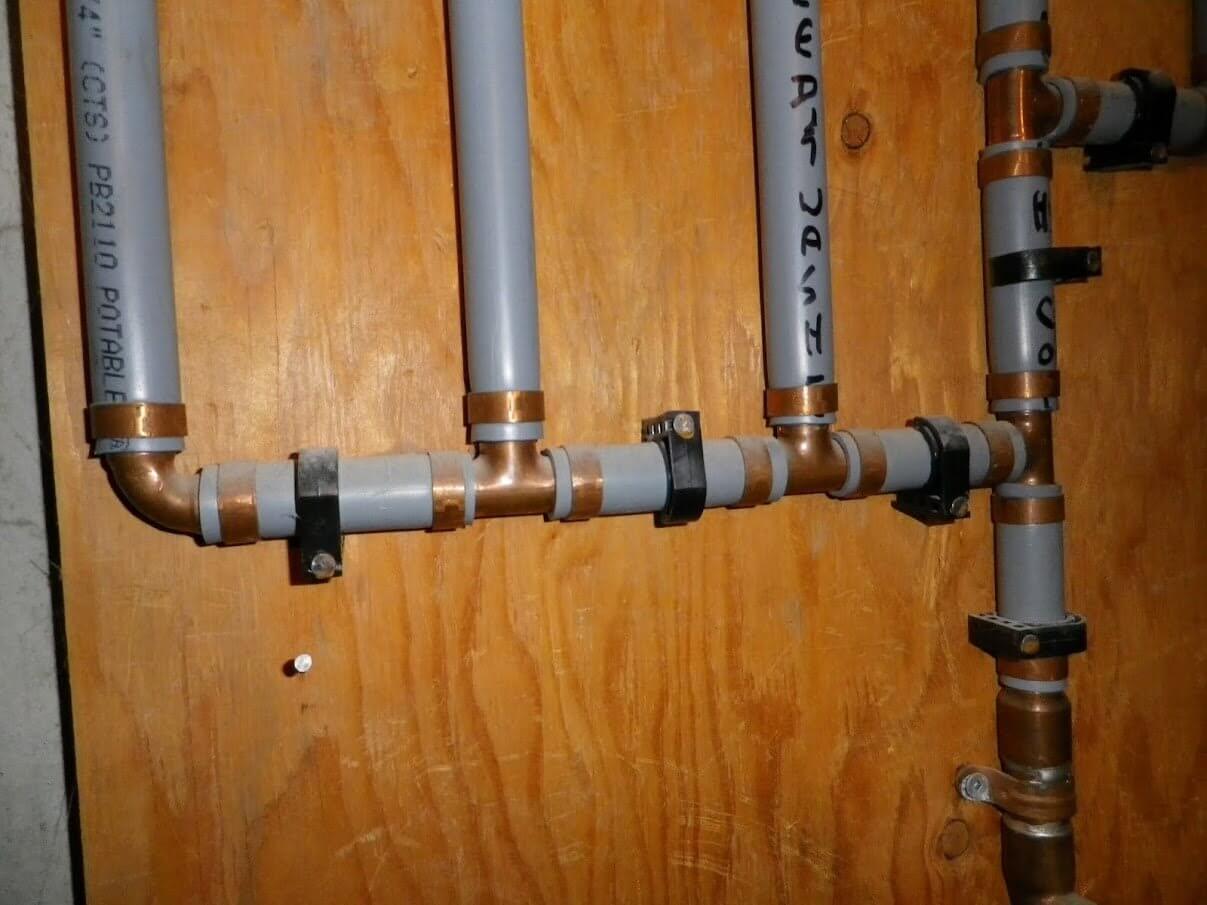Home Inspection 101 Inside The Inspectors Head : Residential Plumbing and Different Types of Water Supply Pipes
Featured Blog Post Written By Aaron Borsch from Core Inspect
The last blog I spoke on water damage and its issues.
This blog topic is focusing on a related subjects, and is all about the types of water supply pipes.
Fixing or Replacing Water Supply Pipes
Everyone gets nervous about water lines. When they break, they have the potential to cause a whole lot of damage. As a matter of fact, I learned that one of the largest areas of claims by insurance is water damage coming from broken water lines. So it is always best to treat it with respect.
I get asked a lot how much it costs to replace all the water lines. And I always answer, it depends. The reason it may depend, is because to replace water lines, its more than just fixing the piping itself. Its getting access to the piping. And this may mean tearing a hole in a wall to get it. After you tear that hole, replace the water line behind it, you need to fix that hole. This always will add to the cost. Roughly half the cost of replacing water lines is re-doing the finish afterwards.
Types of Water Supply Pipes
There are several major types of water supply pipes out there in use today.
Copper Water Lines
For the longest time, copper was the primary material used for piping. The reasons are numerous, such as it being generally a non-toxic material, non porous, durability, and being easy to work with compared with other metallic materials.
Copper prices have increased, so today, copper is one of the more expensive materials to use for water lines. In new construction, you don’t see much of it anymore.
Generally these type of lines have anywhere from 30-40 years life before needing major repairs or replacement.
Cross-Linked Polyethylene (PEX) Water Lines
This is the most common type of used water line today. It is a type of plastic composite material that comes in a variety of colours. Typically, since the colour choices are so vast, you will get some sort of red for hot water lines, and blue for cold water lines. But they can also come clear, orange, black, grey, and a vast other colours.
The reason is it is common is because its inexpensive, and extremely easy to work with. They started becoming very popular after 1999.
Since they are a newer material, they have not withstood the test of time, but generally considered to have approx 25 years life. Though that may remain to be seen. Some types of PEX, such as Kitec, have had major recalls due to their failures. Thankfully we don’t see too much Kitec in the lower mainland.
Chlorinated Polyvinyl Chloride (CPVC) Water Lines
Yes the above name is a mouthful. It is another type of plastic composite, similar to PVC. It has been in use for as far back as the 1960s, but more predominately used in the 90s. It is typically a white colour. It isn’t popular to use, and many favour PEX over CPVC due to PEX’s ability to hold shapes better, and being less brittle. Its quite rare to see CPVC in the lower mainland.
Polybutylene (PolyB) Water Lines
This list wouldn’t be complete without speaking about PolyB. It is a common water line material use primarily in the late 1980s to late 1990s.
It is usually a grey colour, but did also come in other colours such as red. It is famous for having a lawsuit launched against the manufactures of the material for being faulty. There was an out of court settlement made, and a trust fund set up to assist owners in replacing their water lines if they have PolyB. This trust fund has since expired.
It was determined that much of the failure of this water line has to do the elbows and connection points. Basically if you had plastic connection points, you were more prone to failure at these connection points. If you had metal connection points, you were less prone.
The reality though is pretty much every house within the given time frame when it was popular, was built with this water line. It is extremely common in the lower mainland, and almost impossible to escape having this type of water line if you have a house with late 80s to late 90s.
I advise a lot of clients what to do with these type of water lines, and many times I say that it is best to know the difference between plastic connection points, and metal connection points. If you do have the plastic connection points, you do need to be aware you are more at risk to failure.
Next Time
Next blog I will speak on Electrical




